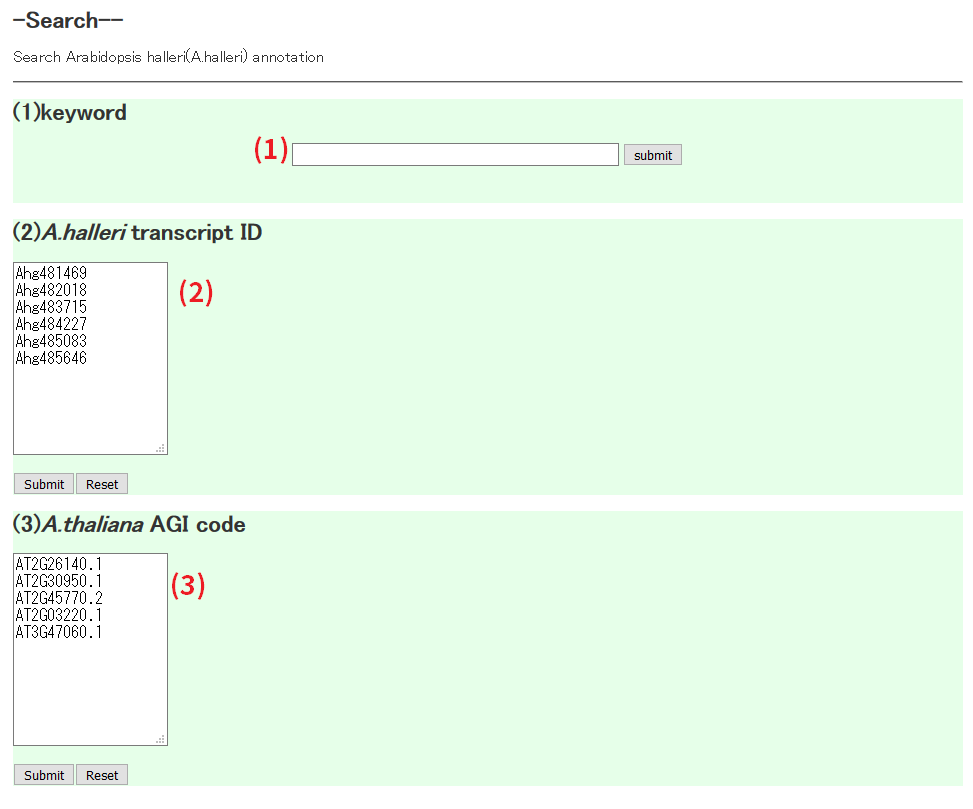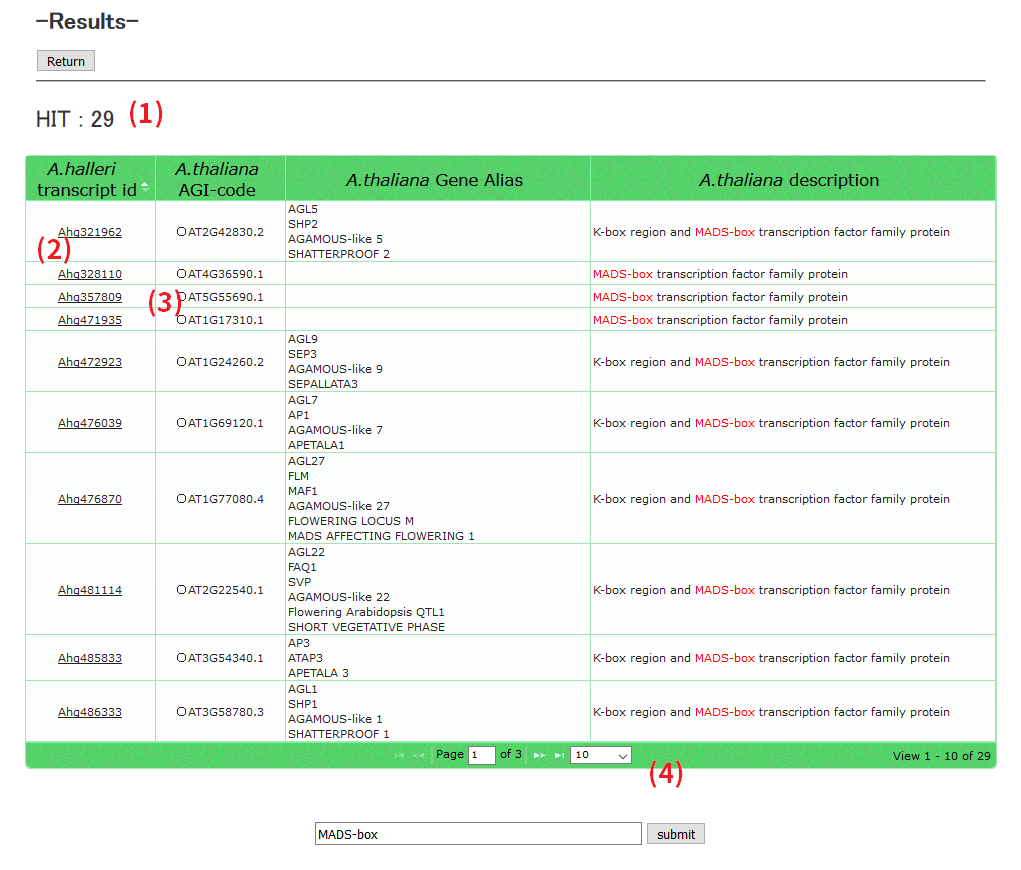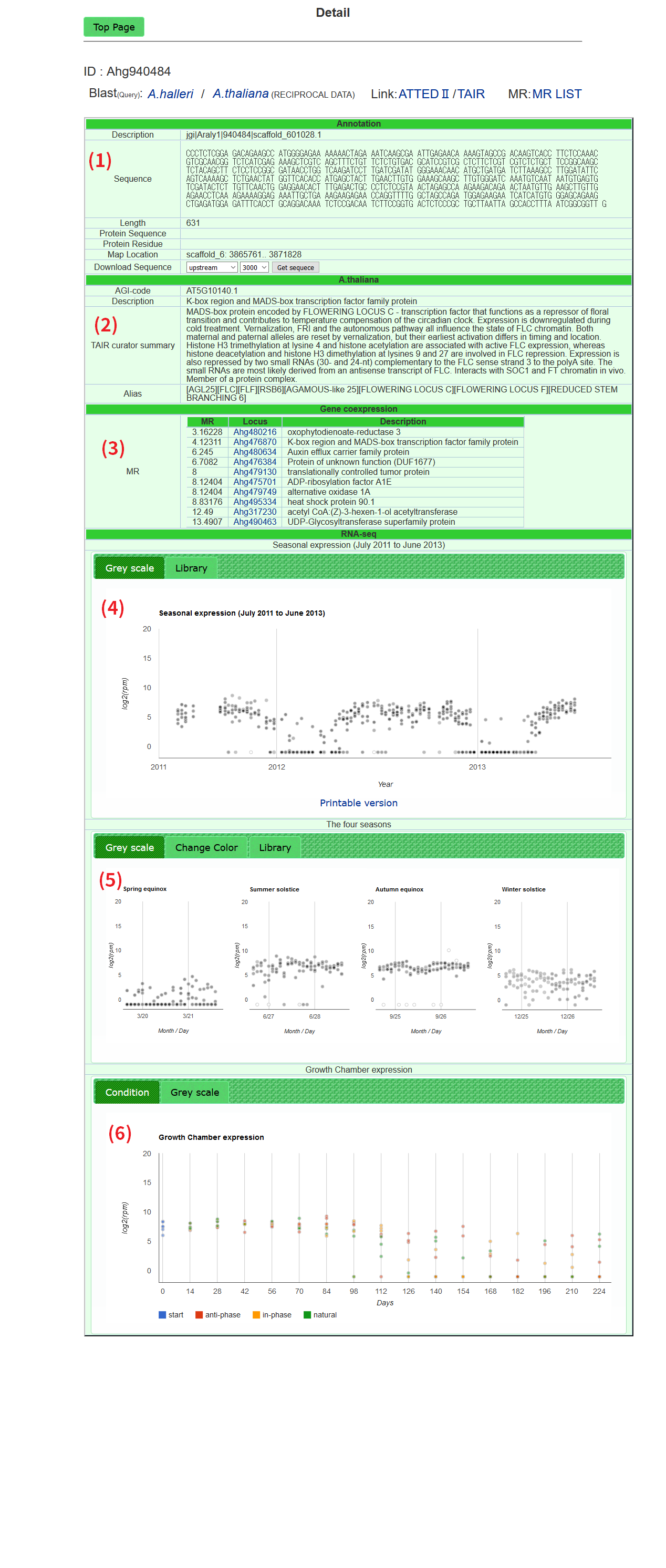
Overview
(a) Seasonal transcriptomes: weekly for ca. 2 years(b) Diurnal transcriptomes: bihourly for 48 hours at the spring/autumn equinoxes and the summer/winter solstices
(c) Phase-manipulation experiments: annual phase differences between day length and temperature, natural, in-phase, and anti-phase
Link
- Original publication: Nagano AJ, Kawagoe T, Sugisaka J, Honjo MN, Iwayama K, Kudoh H. (2019) Nat. Plants. 5:74-83. Annual transcriptome dynamics in natural environments reveals plant seasonal adaptation.
- R codes and data in Nagano et al. (2019) Nat. Plants. 5:74-83[download(789MB)]
- R codes and data in Nishio et al. (2020) Nat. Commun. 11:2065[download(8.5MB)]
- R codes and data in Nishio et al. (2020) Nat. Plants.[download(432MB)]
- Genome browser for histone modifications
- Graph files of seasonal and diel ChIP-seq.[download(4.8GB)]
Data description▼
| Study species: | Arabidopsis halleri subsp. gemmifera, a wild perennial relative of A. thaliana. |
|---|---|
| Study sites: |
Natural populations in Hyogo Prefectures at central Honshu, Japan.
(a) Seasonal transcriptomes: Omoide-Gawa site, upstream of the Omoide River, Taka-cho, 35°06' N, 134°55' E, alt. 190-230 m (b) Diurnal transcriptomes: Monzen-site, Monzen, Taka-cho, 35°05' N, 134°54' E, alt. 140-150 m (c) Phase-manipulation experiments: Growth chambers using seed materials obtained from Omoide-gawa site |
| Sampling: |
Young fresh leaves up to ~10 mm in length (a) Seasonal transcriptomes: weekly for ca. 2 years from 5 July 2011 to 26 June 2013, leaves were collected at noon from six plants at each sampling (b) Diurnal transcriptomes: bihourly for 48 hours at the spring equinox (16:00 19 Mar to 14:00 21 Mar 2013), the summer solstice (16:00 26 Jun to 14:00 28 Jun 2013), the autumn equinox (16:00 24 Sept to 14:00 26 Sept 2013), and the winter solstice (16:00 12 Dec to 14:00 14 Dec 2013), leaves were collected from four plants at each sampling. (c) Phase-manipulation experiments: biweekly during ca. one-year experiments. Three treatments represented annual phase differences between day length and temperature, natural, in-phase, and anti-phase. |
| Transcriptome: | RNA-Seq, HiSeq 2000 (Illumina). |
| Reference for mapping: | The reference transcriptome sequences of Arabidopsis halleri subsp. gemmifera in Kamitani M, Nagano AJ, Honjo MN, Kudoh H (2016) Data from: RNA-Seq reveals virus-virus and virus-plant interactions in nature. Dryad Digital Repository. http://dx.doi.org/10.5061/dryad.4pf96 |
| Gene expression: | RPM (reads per million) values based on expected count values of RSEM. Genes with an average RPM > 2 were designated as expressed genes. |
| Diagrams in the result pages: |
(a) Seasonal transcriptomes: annual changes in gene expression for each gene (b) Diurnal transcriptomes: diurnal changes in gene expression for each gene at the spring/autumn equinoxes and summer/winter solstices (c) Phase-manipulation experiments: Gene expression during growth chamber experiments measured biweekly. |
| Citation: |
When using this data, please cite the original publication: Nagano AJ, Kawagoe T, Sugisaka J, Honjo MN, Iwayama K, Kudoh H. (2018, under review). Annual transcriptome dynamics in natural environments reveals plant seasonal adaptation. |
Instructions
Search page▼
In search page, you can search genes either by entering a key word (1), A. halleri transcript ID (designated here for Arabidopsis halleri subsp. gemmifera) (2) or A. thaliana AGI code (3), and then click the relevant submit button. For (2) and (3), multiple codes can be entered simultaneously.


Result page 1 (List of hit transcripts)▼
In response to submission of your search terms, the result page with a list of hit gene will appear.
(1) Number of hits
(2) Clicking A. halleri transcript ID will open the result page for each transcript.
(3) A. thaliana AGI code lists the best hit in homology search with A. thaliana transcripts. Multiple A. halleri transcripts may hit the same A. thaliana AGI code, and the reciprocal best hits are shown by open circles.
(4) Size of the list per pages can be changed here.

(1) Number of hits
(2) Clicking A. halleri transcript ID will open the result page for each transcript.
(3) A. thaliana AGI code lists the best hit in homology search with A. thaliana transcripts. Multiple A. halleri transcripts may hit the same A. thaliana AGI code, and the reciprocal best hits are shown by open circles.
(4) Size of the list per pages can be changed here.

Result page 2 (Transcript page)▼
In each transcript page, a series of information on molecular phenology of Arabidopsis halleri subsp. gemmifera is available.
(1) The sequence information of A. halleri transcript is listed in the area. Nucleotide sequences of designated regions can be downloaded here.
(2) The information of corresponding A. thaliana homolog is listed in the area.
(3) The transcripts that are similar in the expression patterns in our data are listed by mutual rank (MR) values.
(4) Seasonal transcriptomes: weekly for ca. 2 years from 5 July 2011 to 26 June 2013, leaves were collected at noon from six plants at each sampling
(5) Diurnal transcriptomes: diurnal changes in gene expression for each gene at the spring/autumn equinoxes and summer/winter soltices
(6) Phase-manipulation experiments: Gene expression during growth chamber experiments measured biweekly. See the reference for experimental conditions (Nagano et al, 2018, Journal name X:xxxx-xxxx).

(1) The sequence information of A. halleri transcript is listed in the area. Nucleotide sequences of designated regions can be downloaded here.
(2) The information of corresponding A. thaliana homolog is listed in the area.
(3) The transcripts that are similar in the expression patterns in our data are listed by mutual rank (MR) values.
(4) Seasonal transcriptomes: weekly for ca. 2 years from 5 July 2011 to 26 June 2013, leaves were collected at noon from six plants at each sampling
(5) Diurnal transcriptomes: diurnal changes in gene expression for each gene at the spring/autumn equinoxes and summer/winter soltices
(6) Phase-manipulation experiments: Gene expression during growth chamber experiments measured biweekly. See the reference for experimental conditions (Nagano et al, 2018, Journal name X:xxxx-xxxx).
